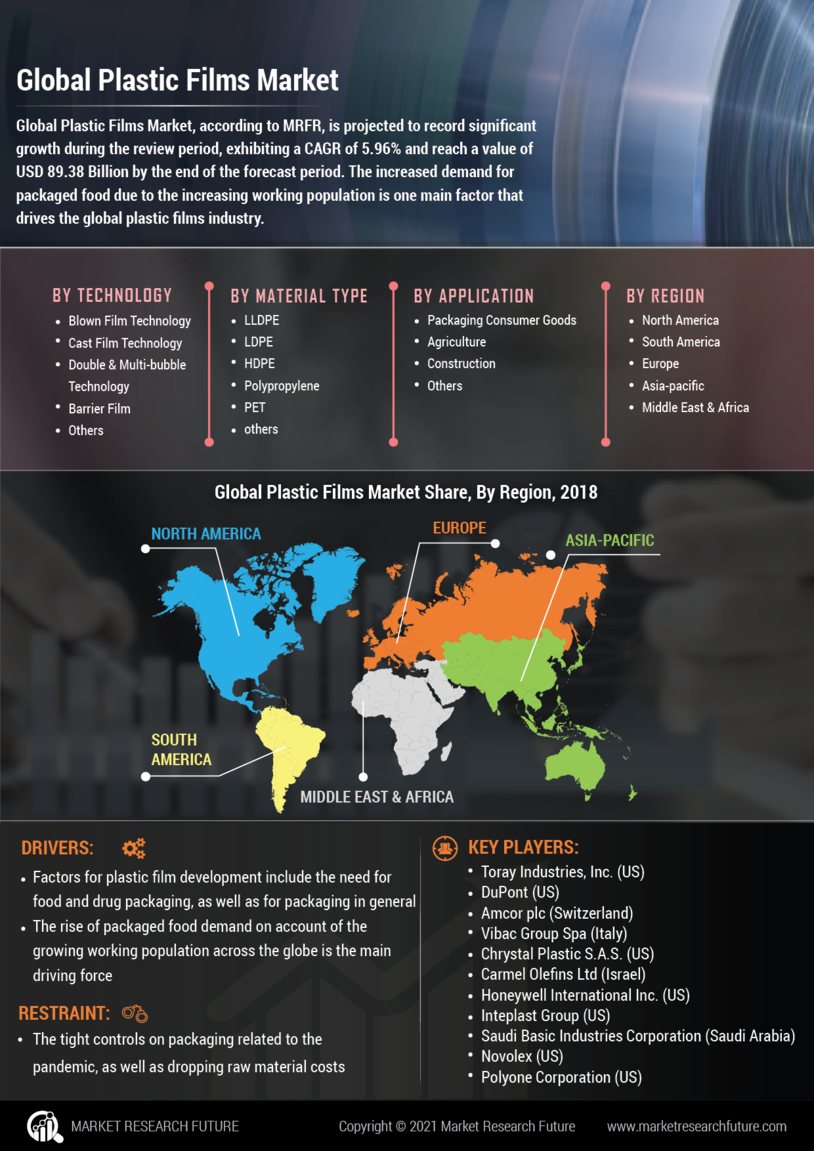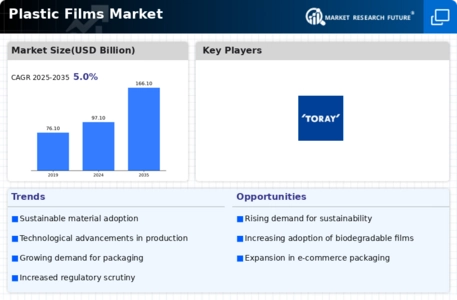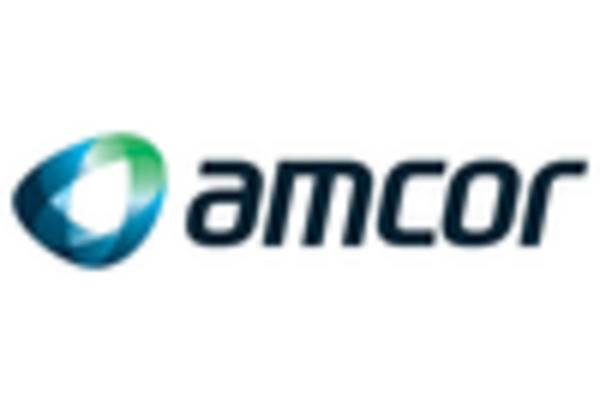Market Growth Projections
The Global Plastic Films Market Industry is poised for substantial growth, with projections indicating a market value of 97.1 USD Billion in 2024 and an anticipated increase to 166.1 USD Billion by 2035. This growth trajectory reflects a compound annual growth rate of 5.0% from 2025 to 2035. The increasing demand for plastic films across various sectors, coupled with technological advancements and sustainability initiatives, contributes to this optimistic outlook. As industries adapt to changing consumer preferences and regulatory landscapes, the market is likely to witness continued expansion, driven by innovation and diversification in product offerings.
Rising Demand for Flexible Packaging
The Global Plastic Films Market Industry experiences a notable surge in demand for flexible packaging solutions. This trend is driven by the increasing preference for lightweight, durable, and cost-effective packaging options across various sectors, including food and beverage, pharmaceuticals, and consumer goods. Flexible plastic films offer enhanced shelf life and protection against moisture and contaminants, which is particularly crucial in the food industry. As a result, the market is projected to reach 97.1 USD Billion in 2024, with expectations of further growth as sustainability initiatives encourage the adoption of recyclable and biodegradable materials.
Diverse Applications Across Industries
The versatility of plastic films across various industries is a key driver of the Global Plastic Films Market Industry. These films find applications in packaging, agriculture, construction, and electronics, among others. In the packaging sector, plastic films are utilized for food preservation, while in agriculture, they serve as protective covers for crops. The construction industry employs plastic films for moisture barriers and insulation. This wide range of applications not only enhances market resilience but also fosters innovation as manufacturers explore new uses for plastic films. As industries continue to evolve, the demand for specialized plastic films is expected to grow, further solidifying the market's position.
Growth in E-commerce and Retail Sectors
The expansion of e-commerce and retail sectors plays a pivotal role in shaping the Global Plastic Films Market Industry. With the increasing volume of online shopping, there is a heightened demand for effective packaging solutions that ensure product safety during transit. Plastic films are widely utilized for wrapping and protecting goods, making them essential in logistics and supply chain management. This trend is expected to bolster the market, as businesses seek reliable packaging options to enhance customer satisfaction. The anticipated growth trajectory suggests that the market could reach 166.1 USD Billion by 2035, underscoring the importance of plastic films in modern retail.
Sustainability Initiatives and Regulations
Sustainability initiatives and regulatory frameworks significantly impact the Global Plastic Films Market Industry. Governments and organizations worldwide are increasingly advocating for the reduction of plastic waste and promoting the use of environmentally friendly materials. This shift encourages manufacturers to innovate and develop biodegradable and recyclable plastic films, aligning with global sustainability goals. As consumers become more environmentally conscious, the demand for sustainable packaging solutions is likely to rise. Consequently, this trend may drive market growth, as companies adapt to meet regulatory requirements and consumer preferences, fostering a more sustainable future for the plastic films sector.
Technological Advancements in Film Production
Technological innovations in film production processes significantly influence the Global Plastic Films Market Industry. Advanced manufacturing techniques, such as blown film extrusion and cast film processes, enhance the quality and performance of plastic films. These advancements enable the production of films with superior barrier properties, clarity, and strength, catering to diverse applications. Moreover, the integration of automation and smart technologies in production lines improves efficiency and reduces waste. As the industry evolves, these technological enhancements are likely to contribute to a compound annual growth rate of 5.0% from 2025 to 2035, reflecting the ongoing commitment to innovation.

















Leave a Comment